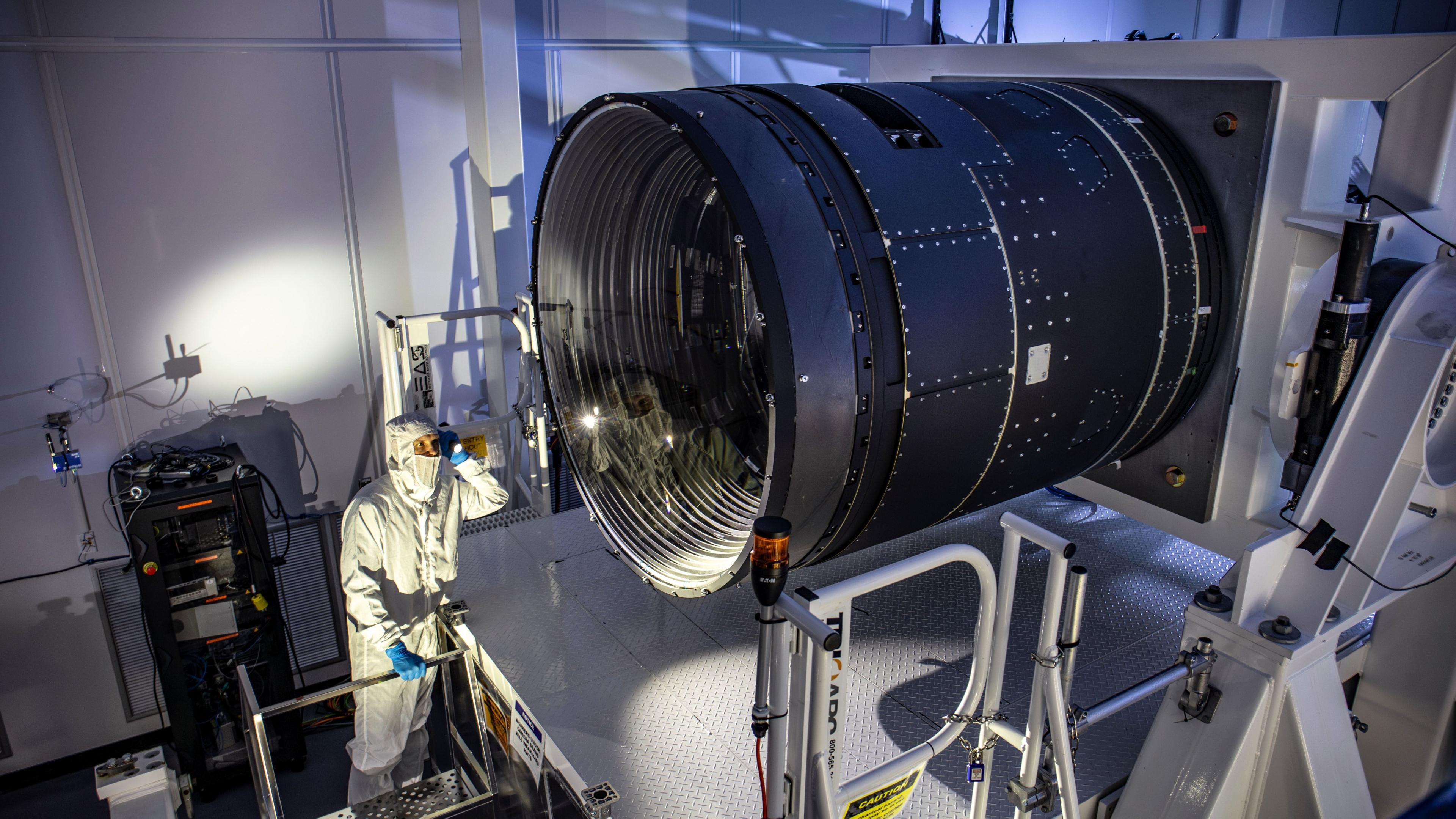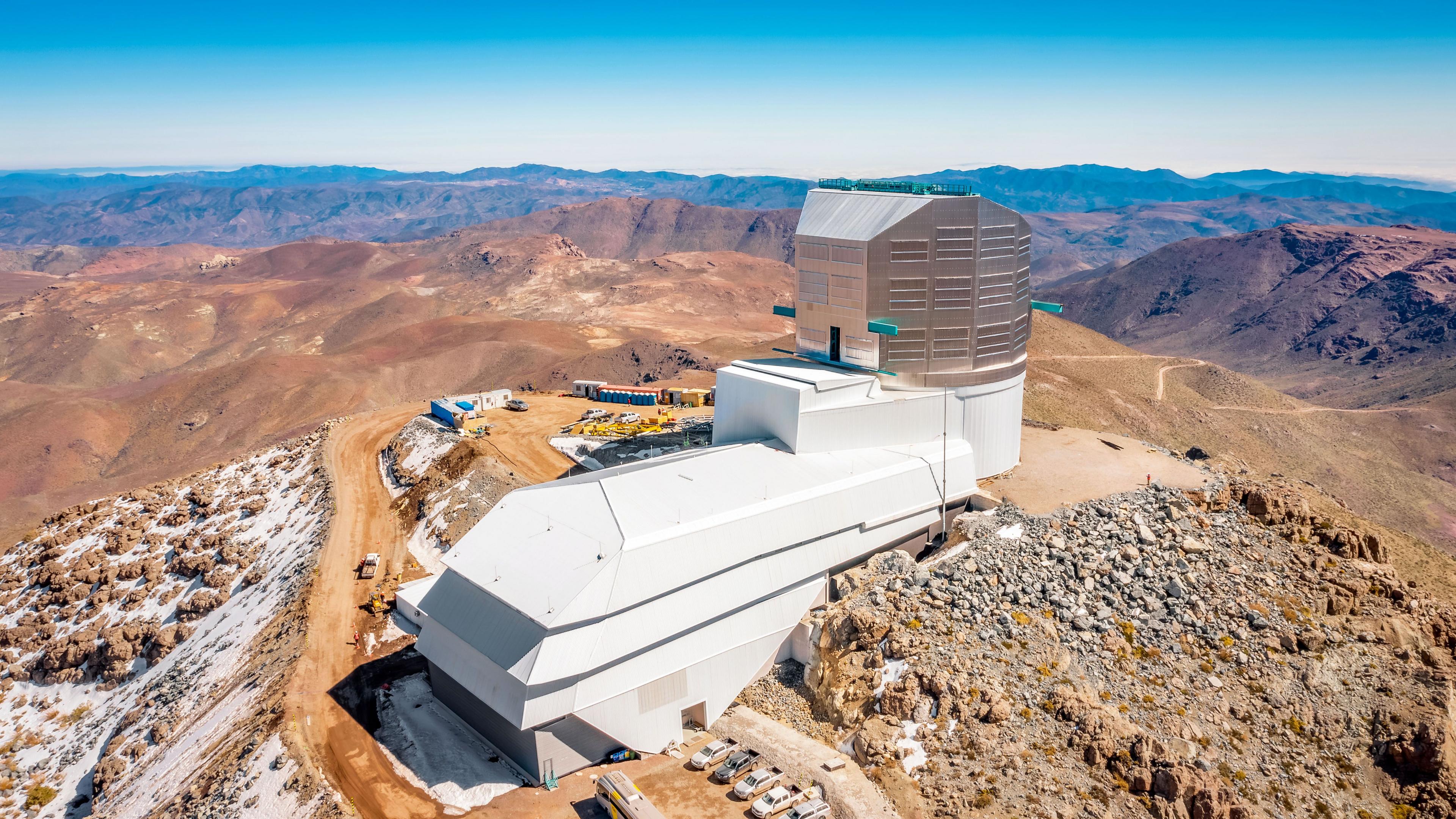World's largest digital camera about to drop first photos

Say cheese... this camera can take very big pictures!
- Published
The first photos from the largest digital camera in the world are about to be revealed and we are expecting some out-of-this-world shots.
The Legacy Survey of Space and Time (LSST) camera was built to capture ground-breaking photos of space.
Next week - on Monday, 23 June - some of these observations will be revealed to the world for the first time.
World's largest camera ready to take out-of-this-world pics
- Published11 April 2024
Scientists discover mysterious pulsating star in space
- Published6 June
Scientists reveal the world's largest digital camera!
- Published17 October 2022
According to the Guinness Book of Records the LSST is not only the largest digital camera, but also the one with the highest resolution which means it can take really detailed photos.
Some top-of-the-range phones have cameras with a resolution of up to 50 megapixels, whereas the LSST has a resolution of 3,200 megapixels!
But you definitely can't carry this camera around with you, it's about the same size as a small car and weighs a massive 2,800kg.
Instead it is kept at the Vera C Rubin Observatory in Chile attached to a powerful telescope.
The images it will take are so large that it would take 400 ultra-high-definition televisions to display one of them at full size.

The LSST has been attached to a telescope at the Vera C. Rubin Observatory on a mountaintop in Chile
The camera aims to capture 1,000 images a night over the next 10 years and the project's mission is to catalogue 20 billion galaxies.
The goal is to capture an ultra-wide and ultra-high-definition time-lapse record of our Universe.
The US National Science Foundation and Department of Energy say the images captured will help scientists answer questions about dark matter, the structure of the Milky Way and the formation of our Solar System.
"No other telescope has been able to detect both real-time changes in the sky and faint or distant objects at the same time on this enormous scale.
"These capabilities mean that exceedingly rare events in the sky, never detected before, will be captured for the first time."
The first spectacular images are to be unveiled on 23 June at 11am in the US, which is 4pm in the UK.
The 'First Look' event is set to be live-streamed on YouTube for any astronomy enthusiasts.
